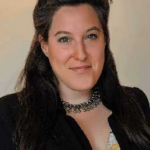Autism has been defined as a neurological difference that can affect how people communicate and interact with the world. In the UK, one in 100 people are on the autism spectrum and, of these, just 16 per cent of adults are in full-time employment. For many in this group, business processes and practices are not as inclusive and accessible as they should be.
Lack of awareness
Research has shown that this is due to a lack of understanding and awareness of neurodiversity in the workplace, as most organisations structurally cater for neurotypical individuals. Considering the high unemployment rates amongst those on the autism spectrum, organisations are missing out on the unique strengths of a large talent pool and the benefits that they can bring to the workplace.
The layered effects of autism and other identities should be built into strategic thinking
To facilitate greater inclusion for those on the autism spectrum in the workplace, it is important to listen to those with the lived experiences to identify what they perceive needs to change. In doing so, organisations can incorporate their thinking into talent attraction and management processes more effectively and sustainably.
Crucially, and to ensure such initiatives and strategies are inclusive of all identities, organisations should also understand the intersections between autism and other diversity strands such as gender, race, sexual orientation, and social mobility. The layered effects of autism and other identities should be built into strategic thinking.
The intersections between autism and gender
There has long been a perception that autism is a male-centred difference, which has meant that women have often struggled to get (successfully) diagnosed. In fact, autism doesn’t differentiate between genders.
“Women tend to be more effective at social-masking than men, so can naturally assimilate themselves into social peer groups and wider society. However, it is important to understand that if an employee is diagnosed later in life, this should not be seen as barrier to their success in the workplace,” explains Oliver Fenghour, autism specialist and founder of Advance: The Disability Consultants.
For those who are diagnosed in later life, it is important that employers do not treat them differently; if diagnosed employees need workplace adjustments then this should be openly discussed in performance management appraisals or informal catch ups with their line manager, and with HR where necessary.
Whilst more women are now being diagnosed with autism compared to previous years, it is through a better understanding of the link between gender and autism that we ensure that workplaces are more inclusive of those on the autism spectrum.
Autism and sexual orientation
Contrary to popular belief, research by the National Autistic Society estimates that just 5% of autistic people identify as asexual. Therefore, it is important to focus on how the neurotypical world can work to affirm and support the LGBT+ autistic community when it comes to disclosing their sexual orientation: “Autistic people typically don’t feel stigmatised in quite the same way as neurotypical people do when it comes to disclosing sexual orientation,” says Fenghour. “They typically identify themselves as having a sexual preference based on a love of a person and not on the gender of that individual.”
The autism narrative has been predominantly white-centred, partially because there are little to no visible ethnically diverse underrepresented autistic role models
Like many minority groups, the intersecting effects of identifying as LGBT+ and autistic can increase the prevalence of mental ill health. Therefore, organisations need to consider how they can incorporate these considerations into their wellbeing support mechanisms.
Autism and race
There is limited research about the experience of autistic people from Black, Asian and minority ethnic (BAME) groups. This is mainly due to the stigma that has traditionally been attached to neurodiversity in some racially and culturally diverse communities.
According to research, despite around 100 million people globally identifying as autistic, numerous domiciles fail to produce data on autism. This is often due to cultural and religious beliefs and the misconception that autism is reflective of bad parenting, disruptive behaviour, or a disruption of the mind that can be cured by traditional remedies. As a result, some parents with autistic children or relatives often feel ashamed and blamed by their local communities.
Fenghour highlights that the autism narrative has been predominantly white-centred, partially because there are little to no visible ethnically diverse underrepresented autistic role models: “There has long been this perception that autism is a white male-centred difference. Yet, this fails to acknowledge the frequent intersection between neurodiversity and race, and its subsequent layered effect on experiences of disadvantage and exclusion,” he explains.
As organisations and individuals, it is critical that we work to understand the intersection between autism and race to create a more inclusive environment for all those who identify as autistic.
[cm_form form_id=’cm_65a14c3f5da64′]
Autism and social mobility
Access to education is often seen as a strong driver of social mobility. Organisations, however, typically target graduates to increase their autistic talent pipelines. Employing autistic talent solely through higher education avenues fails to factor in autistic talent that don’t have access to academic routes due to differences in socio-economic status.
Although autistic graduates are often a strength for those ‘hard to fill’ STEM roles, organisations need to understand what an autistic talent pipeline might look like for their organisation, what types of roles will be suited to supporting and developing their autistic talent, and the diverse sourcing mechanisms they could use in their recruitment processes.
To ensure those who identify as autistic are fully included in a psychologically safe environment, it is important that all members feel comfortable to maximise their potential in the workplace
“Organisations should explore multiple routes to market for hiring autistic talent, of all ages and backgrounds, looking beyond just higher education institutions,” highlights Fenghour. “If we are to see global autism employment rates increase, there must be a more concerted effort to make the hiring and recruitment processes inclusive of all autistic talent, regardless of their academic and/or socio-economic background.”
There is clearly a long way to go when it comes to mitigating the stigma associated with autism in the workplace – many organisations are only at the start of their inclusion journey. However, to ensure those who identify as autistic are fully included in a psychologically safe environment, it is important that all members feel comfortable to maximise their potential in the workplace.
By creating an environment where the plurality of intersecting identities is recognised, celebrated, and consciously included, organisations will be in a morally and commercially better position to embrace the autistic community’s value long-term.
This article was written by Corine Sheratte, Senior Diversity and Inclusion Consultant, Green Park, in collaboration with Oliver Fenghour, Autism Specialist and Founder of At Advance: The Disability Consultants








One Response
Thank you for writing an
Thank you for writing an article which addresses the nuances in this space and amplifies neurodiverse voices. Excellent.